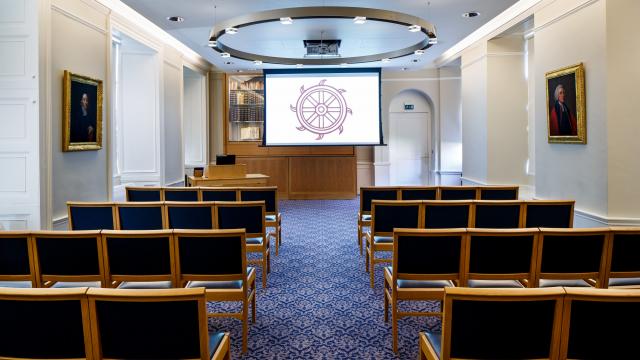
The following article by Professor Richard Dance (1997) was first published in this year's edition of The Wheel, the College's annual newsletter, in June 2023.
The wheel of St Catharine of Alexandria has been a familiar symbol of our College community since its foundation on St Catharine’s Day 1473. As the College’s spokes-person (if you’ll pardon the pun …) for English etymology, I’m sometimes asked about the history of the word ‘wheel’. And in fact it’s a fascinating example of language change and interconnection.
Wheels are, of course, a very old invention, and the same word has been used to describe them right through the recorded history of English. 550 years ago, wheel wouldn’t have looked very different to the word we use today — even if, in a period when English spelling wasn’t fully standardised, it was as likely to be written whele or wheele. But some of its earlier medieval forms look (and would have sounded) much stranger to us. Consider this passage from a 13th-century account of the life of St Catharine, which describes the shape of the wheel we know from the Catz crest:
hat … ʒarkin fowr hweoles; ant let þurhdriuen þrefter þe
spaken ant te uelien wið irnene gadien
(‘command … to be prepared four wheels; and after that cause the spokes and the felloes to be pierced with iron spikes’)
Felloes, incidentally, is an old word for the curved pieces of wood that made up the outer rim of a wheel, and has nothing to do with Fellows — who originally (in Old
Norse, the language of the Vikings) were feelayers, people who contributed goods jointly to some enterprise. Although I’ve sometimes thought it’s a fitting coincidence that wheels have felloes.
Before the Norman Conquest, we find a range of Old English spellings for our wheel word, including hweogol and hweowol — as in the ninth-century description of a wænes hweowol or ‘a wain’s [i.e. wagon’s] wheel’. If we apply the techniques of comparative philology, these earliest English forms give us the vital clue that English wheel (and its
Germanic cousins like Dutch wiel, Swedish hjul) descends from the same prehistoric ancestor (reconstructed as *kwekwlo-) that produced related words in the wider Indo-
European family of languages like Sanskrit cakrá- ‘circle, wheel’ and Greek kúklos ‘circle’, which ultimately shares a root too with Greek pólos ‘axis’. And of course these
words are, in turn, the sources of some familiar lexical items also borrowed by English: chakra, cycle and pole. As we etymologists like to say: what goes around, comes around.
Find out more about studying Anglo-Saxon, Norse and Celtic at St Catharine's.







